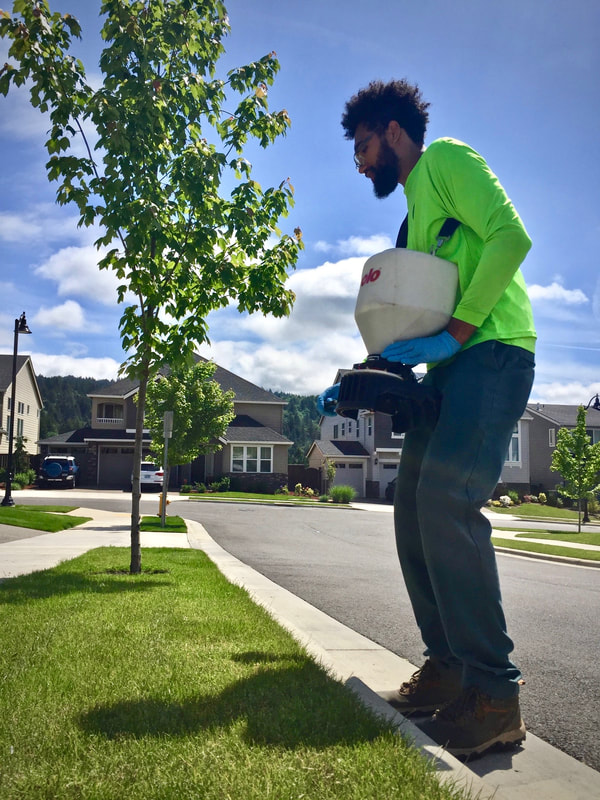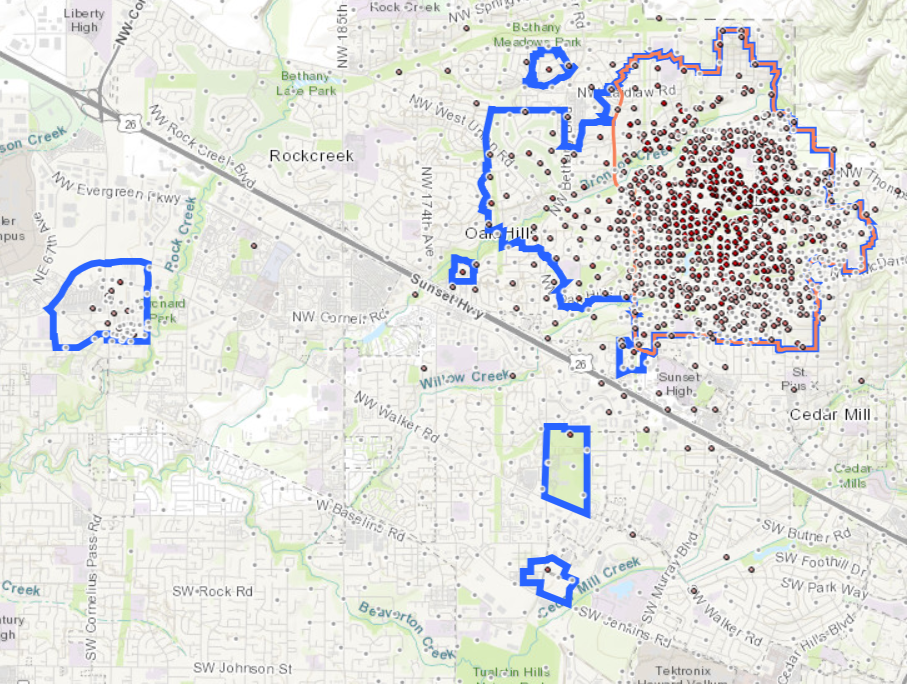|
PLEASE NOTE: THIS POST IS AN ARCHIVE FROM THE 2017-2018 PROJECT YEAR. Second Treatment Wrapping Up in 2018 Thank you to residents and land managers in Washington County (Cedar Mill, Bethany and Oak Hills) and Oakland area that have been helping the Oregon Department of Agriculture beat the Japanese beetle! The Oregon Department of Agriculture (ODA) is currently wrapping up a second treatment in year two of the Japanese beetle eradication project. Support from resident in the area has been very positive. Before treatment, the ODA received over 5,000 responses from residents allowing ODA and their staff to treat the properties, including 30 Homeowners Associations supporting treatment in common areas. Tualatin Hills Parks and Recreation Department and the Beaverton School District are also supporting the project and allowing treatment to parks and school fields. Applicator crews have said that residents in the area are expressing their support for the project, with many "Thank you’s" and "Get those beetles!". Thank you to all of the residents who are working with us to protect Oregon’s plants and agriculture from this invasive species! Summary of the 2018 Treatment The ODA continued their relationship with General Tree Service to apply the same treatment as last year, a granular pesticide called Acelepryn G® which is a targeted larvicide that kills certain pests in their larval state in the soil. The granules are broadcasted on lawns and other landscaped areas, then it breaks down into the soil when it is watered in through rain or sprinklers. This pesticide is a “reduced risk” pesticide and is not considered a health threat for humans, pets, and other insects that don’t go through a larvae stage in treatment areas. According to the label, “Acelepryn G is recommended for Integrated Pest Management programs on turf and landscape ornamentals because it does not directly impact natural arthropod predator and parasitoid populations including ladybird beetles (aka ‘ladybugs’).” Since the treatment targets certain pest larvae in the soil, the treatment with Acelepryn G® has no adverse effects on pollinators when applied according to the label instructions. For more treatment & health information, please visit our Treatment page. A snapshot of the treatment area in Washington County
While there have been some delays due to weather, treatment has been able to be completed as scheduled due in large part to the hard work by application crews. A big shout out to the crews members and crew leads who are working long days, rain or shine, to make sure treatment is done correctly and on time. PLEASE NOTE: THIS POST IS AN ARCHIVE FROM THE 2017-2018 PROJECT YEAR.
2018 Treatment Information For Residents in the Japanese Beetle Treatment Area in Cedar Mill and nearby Neighborhoods Treatment may take place anytime between 8am and 5pm. There is just one treatment per property or residence scheduled for 2018. The treatment for Japanese beetles will be done by a professional, licensed pesticide applicator under contract with the Oregon Department of Agriculture (ODA). An observer from ODA will be also be present during treatment. Only lawns and ornamental planting beds will be treated. Vegetable gardens, berry bushes, and other edible plants will not be treated. This treatment consists of the application of Acelepryn G granular larvicide to lawns or ornamental planter beds. This will take approximately 15 minutes or less; most properties done in about 5 minutes or less. You do not need to be home or present for the application. If you will not be home, please see instructions below about how to prepare your residence for the treatment. The scheduled time above is weather dependent. If it is too rainy on the day of scheduled treatment, we will notify you of the rescheduled date as soon as possible. Very rainy weather or saturated soil increases the risk of the product being washed off the surface quickly and not entering the soil. Normal to light rain is OK. Information from the Oregon Health Authority about Acelepryn G can be found at http://oda.direct/jbhealth Before the treatment On or prior to the morning of treatment, please make sure that: 1. Your property is accessible to the contractor’s crew. We need to treat front and backyards. All applicable outside gates and entryways should be unlocked. Animals must be kept inside for the safety of our crew. 2. Non-stationary items that can be easily moved should be removed from lawns and grassy areas. 3. Water and food bowls for pets should be removed or covered during application. 4. Adults, children and pets of all kinds should remain inside during the application so as not to interfere with personnel conducting the treatment. The application should take 15 minutes or less to complete. After the treatment To get the Acelepryn G near the grass roots to be effective against root-feeding grubs, we ask you to water your lawn for 5-10 minutes at your earliest convenience. If it has rained during or following application, it is not necessary to water it in. Keep children and pets off the treated area as long as granules are still visible. Inspect walkways and patios, and sweep-up or pick up stray granules (after putting on gloves). Granules are supposed to be watered in, as instructed by ODA. Keep off of the treated area until the granules are completely watered in and the lawn has dried. The area is then immediately safe to re-enter. Please do not hesitate to contact ODA with any questions or concerns by phoning 1-800-525-0137 or emailing the project coordinator Chris Hedstrom at [email protected]. |
Header photograph by Whitney Cranshaw, bugwood.org
Categories
All
Archives
January 2024
|
|
This website is intended to provide readers with information that has been peer reviewed and produced from transparent and accountable sources. The Oregon Department of Agriculture is the lead agency for this project and maintains this website.
|
© COPYRIGHT 2018. ALL RIGHTS RESERVED.



 RSS Feed
RSS Feed
